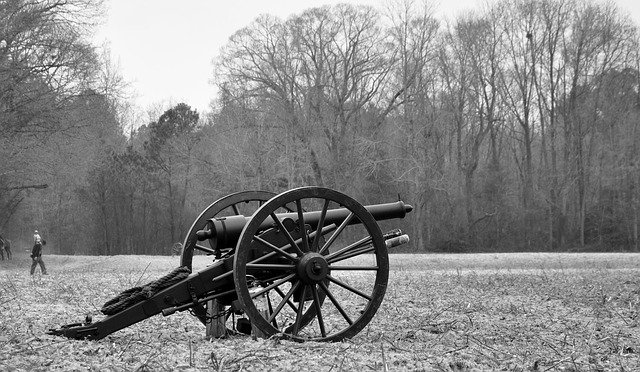
When choosing the best metal detector for archaeology, consider the Fisher F22 for its lightweight design and 25-hour battery life, or the DR.ÖTEK with its enhanced detection accuracy. The MINELAB X-Terra Elite offers multi-frequency targeting, while the Nokta Legend Pro Pack’s features excel in versatile conditions. Evaluate discrimination features and sensitivity controls for efficient artifact recovery. Explore frequency settings for varied terrain adaptability. Your archaeological efforts could greatly benefit from these advanced tools.
Key Points
- MINELAB X-Terra Elite offers multi-frequency detection and superior depth, ideal for professional archaeology enthusiasts detecting in various conditions.
- DR.ÖTEK excels in artifact sensitivity and features a waterproof coil, perfect for diverse archaeological settings.
- Fisher F22 is lightweight and user-friendly with ample battery life, suitable for amateurs undertaking extended exploratory projects.
- Adjustable discrimination and ground balance controls in Nokta improve site integrity during artifact recovery.
- VLF technology in various detectors enhances flexibility by allowing variable frequency settings for specialized archaeological exploration.
Best Metal Detectors For Archaeology
When selecting the ideal metal detector for archaeological exploration, consider essential features of the Fisher F22 Weatherproof, DR.ÖTEK, MINELAB X-Terra Elite, and Nokta The Legend Pro Pack.
You’ll benefit from the Fisher F22’s structural integrity with its weatherproof design, while the DR.ÖTEK offers a unique sensitivity to valuable artifacts.
The MINELAB X-Terra Elite and Nokta The Legend Pro Pack provide advanced discrimination capabilities, making them indispensable tools for precise artifact recovery.
Fisher F22 Weatherproof Metal Detector

For amateur archaeologists looking for a reliable tool, the Fisher F22 Weatherproof Metal Detector stands out with its user-friendly design and versatile capabilities.
Weighing just two pounds, it’s perfect for extended fieldwork. Its 9-inch waterproof coil accurately detects surface and buried metals up to nine inches deep, supported by a discrimination mode to filter out unwanted materials.
With a 4-tone Audio-ID System and 0-99 numeric Target-ID, target identification becomes intuitive. Operating at 7.69 KHz, it excels even in rain with its IP54 weatherproof rating.
Easy assembly and a 25-hour battery life enhance its suitability for archaeological pursuits.
Best For: Amateurs and hobbyist metal detector enthusiasts, including beginner archaeologists, looking for a lightweight and easy-to-use tool that performs well in diverse weather conditions.
Pros:
- Lightweight and well-balanced, making it comfortable for extended use.
- Weatherproof and effective in all conditions, including rain, due to its IP54 weatherproof rating.
- Intuitive target detection and discrimination features that accurately identify valuable targets.
Cons:
- Some users have reported a need for more power compared to other models.
- Minor criticism about the arm rest not being easily adjustable.
- Limited detection depth capability compared to some more advanced models.
DR.ÖTEK Metal Detector

The DR.ÖTEK Metal Detector is the ideal choice for professional archaeology enthusiasts seeking precision and performance.
Its state-of-the-art design includes a new DSP chip for enhanced accuracy, supported by a 9.8-inch coil, allowing detection of coins up to 10 inches deep.
With five modes, including Discrimination and Memory, you can customize searches effectively.
The user-friendly interface comprises a large 3 x 2.2-inch LCD for clear readings.
Adjustable stem length and IP68 waterproof rating guarantee versatility in varied terrains.
With high customer ratings and added accessories like a headset and shovel, it promises an engaging, effective archaeological experience.
Best For: Professional archaeology enthusiasts and hobbyists who seek accuracy and effective metal detection in various environments.
Pros:
- High accuracy with a new DSP chip and user-friendly multidisplay LCD.
- Versatile with adjustable stem length and five operating modes.
- Accessories like headset and shovel add value.
Cons:
- Some accuracy issues in certain conditions reported by users.
- May require practice for optimal use in complex environments.
- Not specifically designed for underwater detection despite waterproof rating.
MINELAB X-Terra Elite Detector

Consider the MINELAB X-Terra Elite Detector if you’re an archaeology enthusiast seeking a tool with advanced technology and versatility.
Its Multi-IQ Precision Targeting utilizes simultaneous multi-frequency detection for thorough coverage, guaranteeing even the most elusive treasures aren’t overlooked.
The V12X coil is compatible with all EQUINOX coils, enhancing adaptability.
You’ll appreciate its high-performance audio system, offering precise target size and depth indication.
With full waterproof capability up to 16 feet, it’s perfect for underwater searches.
Lightweight at 298 grams, it guarantees a comfortable user experience.
Despite an occasional inconsistent display, this detector excels in precision and user satisfaction.
Best For: Archaeology enthusiasts and treasure hunters looking for a versatile and advanced metal detector with waterproof capabilities.
Pros:
- Multi-IQ Precision Targeting with simultaneous multi-frequency detection ensures thorough coverage.
- Lightweight design at 298 grams offers comfortable use over extended periods.
- Fully waterproof up to 16 feet, ideal for underwater treasure hunting.
Cons:
- Occasional inconsistency with the digital screen display.
- High sales rank suggests it may not be the most popular choice among consumers.
- Limited to users who can operate or understand complex detection technology.
Nokta The Legend Pro Pack Metal Detector Kit

Discover the perfect tool for passionate archaeologists and treasure hunters with the Nokta The Legend Pro Pack Metal Detector Kit.
This all-inclusive package includes essential accessories such as waterproof DD Search Coils, a Nokta Pointer, and a replaceable spare battery.
As Nokta’s first simultaneous multi-frequency detector, The Legend excels in diverse ground conditions and environments, including submersion up to 10 feet.
Advanced features like depth detection, precise discrimination, and silent operation guarantee high performance in cluttered sites.
With a vivid LCD screen and intuitive interface, you can easily adjust settings, maximizing operational efficiency whether on land or at the beach.
Best For: Treasure hunters and archaeologists seeking a versatile and high-performance metal detector for varied environments and precise target localization.
Pros:
- Waterproof up to 10 feet for underwater exploration.
- Simultaneous multi-frequency technology for adaptability to diverse conditions.
- Long battery life with replaceable spare battery and USB charging capabilities.
Cons:
- Relatively heavy at 11.62 pounds, which may be cumbersome for some users.
- Premium features might be excessive for casual hobbyists.
- Higher price point compared to single-frequency metal detectors.
Things To Consider When Buying a Metal Detector For Archaeology

When selecting a metal detector for archaeology, prioritize detection depth capabilities to reliably locate buried artifacts.
Consider the importance of discrimination features, which enable you to differentiate between metal types and target specific objects.
You should also assess frequency settings flexibility, sensitivity adjustment options, and ground balance controls to guarantee peak performance in varying soil conditions.
Detection Depth Capabilities
Understanding detection depth capabilities is important when selecting a metal detector for archaeological purposes. Depth capabilities affect how deep beyond the surface your detector can identify potential artifacts.
Standard detectors often operate efficiently at shallow depths of 6 to 12 inches. However, advanced models with variable frequency technology can reach 18 to 24 inches or more, depending on soil composition and target size.
Sensitivity adjustments allow you to refine depth detection further, significant for differentiating between closely positioned artifacts. Additionally, consider ground balance—crucial for minimizing interference from mineralized ground.
Discrimination Features Importance
While the detection depth of a metal detector is essential, the discrimination features are equally important in archaeological exploration.
Discrimination allows you to distinguish valuable artifacts from junk metal, reducing the time spent on unnecessary digs. With advanced discrimination, you can fine-tune your detector to ignore trashy signals like foil or iron, focusing instead on conductive metals such as gold, silver, or bronze, which are often target materials in archaeological sites.
Modern detectors feature adjustable discrimination settings, enabling you to calibrate based on specific site conditions. By using discrimination features effectively, you enhance the efficiency of artifact recovery and preserve site integrity by minimizing unnecessary ground disturbance.
Investing in a detector with robust discrimination settings can considerably impact your archaeological research outcomes, making your exploration more productive.
Frequency Settings Flexibility
In archaeological metal detecting, frequency settings flexibility is as important as discrimination features. A detector with adjustable frequency settings provides you with the capability to identify a diverse range of targets. Lower frequencies penetrate deeper, ideal for locating large, conductive artifacts like weapons or tools. Conversely, higher frequencies excel in detecting small, low-conductivity objects, such as coins or jewelry.
Multi-frequency detectors offer you the versatility to adapt to varying site conditions without switching devices.
Field expertise supports the utility of flexible frequencies in traversing mineralization and discerning artifact density beneath the soil. As you consider a detector, prioritize models offering variable frequency settings (VLF technology is a common standard), enabling you to optimize for different archaeological contexts and improve the probability of successful excavation discoveries.
Sensitivity Adjustment Options
A crucial consideration when selecting a metal detector for archaeology is its sensitivity adjustment options. This feature allows you to fine-tune the detector’s ability to identify metal objects at varying depths.
By adjusting sensitivity, you can minimize noise from mineralized soil, increasing the probability of detecting significant artifacts without interference. High sensitivity might help detect smaller, deeper objects, but too much could lead to false positives. Low sensitivity can reduce unwanted signals but might miss elusive relics.
Look for detectors that provide a range of sensitivity levels and easy controls, empowering you to adapt to different archaeological sites and conditions effectively. Evaluating a detector’s sensitivity adjustment capability is essential for precise artifact location, optimizing your on-field discoveries.
Ground Balance Controls
When you’re choosing a metal detector for archaeological purposes, consider the importance of ground balance controls. This feature counteracts the effects of mineralization in the soil, enabling your detector to differentiate between valuable artifacts and ordinary ground minerals.
Without ground balance, false signals become prevalent, complicating your dig.
There are primarily two types of ground balance: manual and automatic. Manual ground balance demands operator input for adjusting sensitivity, perfect for seasoned archaeologists who require tailored detector responses.
In contrast, automatic ground balance continually adapts to fluctuating soil conditions, offering consistency for those new to detecting or when exploring varied terrains.
Evaluate your experience level and terrain diversity when deciding between manual or automatic ground balance.
Correct settings considerably enhance artifact detection accuracy and reduce extraneous noise.
Weight and Portability
While ground balance considerably enhances detection accuracy, don’t overlook the importance of weight and portability in your choice of a metal detector for archaeological work.
You’ll spend significant time in the field, often in rugged environments, where a lightweight, portable detector minimizes fatigue and maximizes efficiency. Select a model with collapsible shafts or foldable designs for easy transport and storage.
Consider the total weight including batteries; lighter devices around 2-3 kg usually offer better maneuverability without sacrificing performance.
Ergonomic handles and adjustable armrests can further reduce strain during extended use.
Prioritize detectors with interchangeable coils; this flexibility allows quick adaptations to diverse site conditions without additional equipment.
Choose wisely to guarantee seamless and effective archaeological exploration.
Frequently Asked Questions
How Does Metal Detecting Impact Archaeological Site Preservation?
You directly impact archaeological site preservation through metal detecting by potentially disturbing context, stratigraphy, and integrity. It’s vital to balance exploration with conservation using techniques like mapping finds to prevent misinterpretation of the site’s historical narrative.
Are There Legal Restrictions on Metal Detecting in Archaeological Sites?
You’re legally restricted from metal detecting on archaeological sites without permits. Regulations like the Archaeological Resources Protection Act limit activity to protect cultural heritage. Illegal detection could result in legal consequences, highlighting the importance of respecting preservation laws.
What Permits Are Needed for Archaeological Metal Detecting?
You’ll need permits to legally conduct archaeological metal detecting. Requirements vary by jurisdiction, but often include site surveys, consent from landowners, and adherence to archaeological standards. Check regional guidelines to verify compliance and obtain necessary documentation.
How Can I Identify Artifacts Versus Common Metal Finds?
To distinguish artifacts from common metal finds, you should analyze the object’s patina, context, and material composition. Research comparative typologies and utilize field guides. Regularly consult experts to verify potential archaeological significance.
What Ethical Considerations Should I Follow When Metal Detecting for Archaeology?
When you’re metal detecting for archaeology, adhere to local laws, obtain landowner permissions, and report discoveries to authorities. Disturbing burial sites violates ethical principles. Always prioritize preservation, documentation, and contributing to shared historical knowledge.



